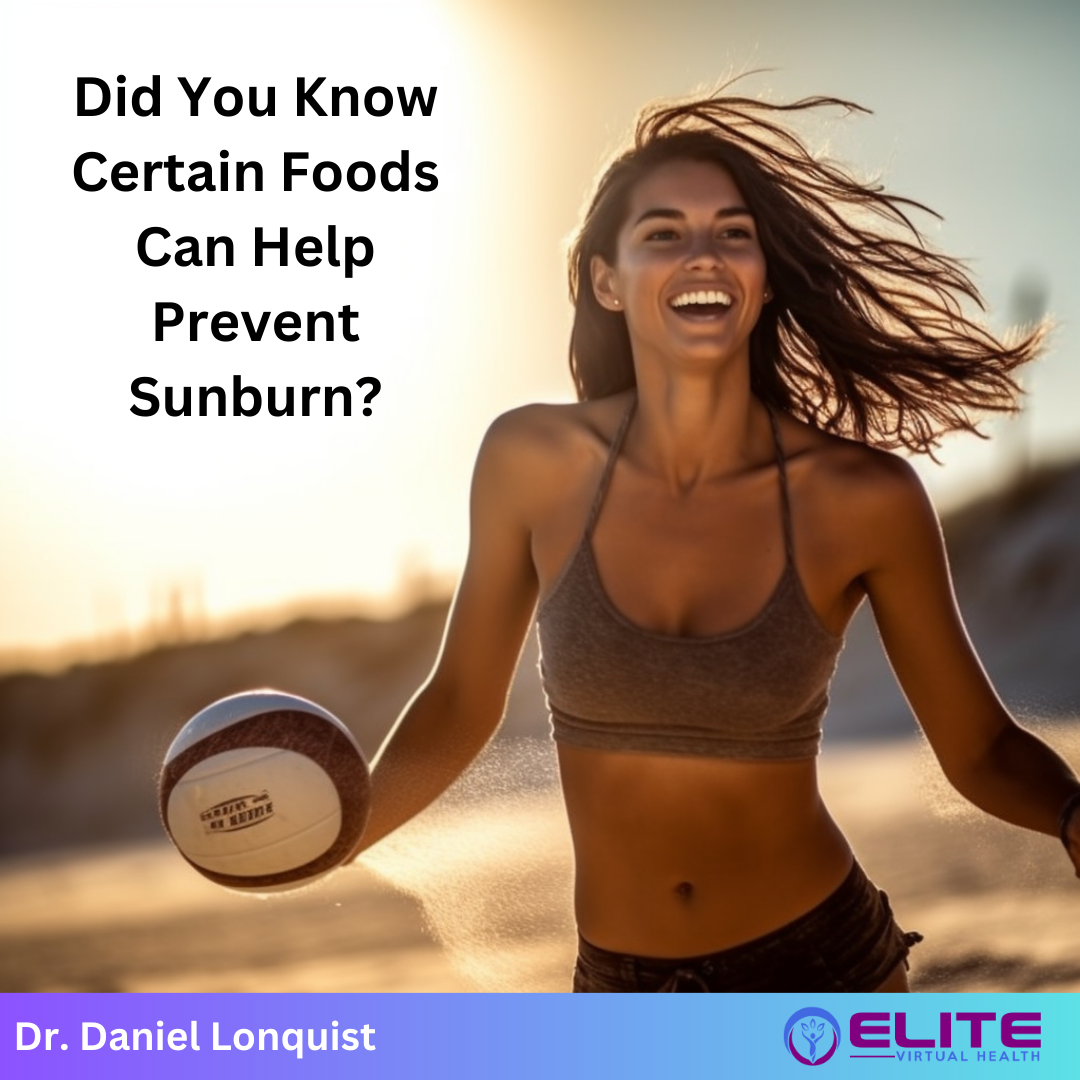
Sunburn is a common problem that affects millions of people each year and can cause serious health problems, including skin cancer. However, there are several steps you can take to prevent sunburn and protect your skin while still enjoying the many benefits of sun exposure. One effective way to prevent sunburn is to decrease your intake of omega-6 fatty acids, particularly linoleic acid, and increase your intake of omega-3 fatty acids and astaxanthin. Omega-6 fatty acids are found in many common foods, including vegetable oils, meat, and dairy products. While they are important for overall health, they can contribute to inflammation and increase the risk of sunburn. On the other hand, omega-3 fatty acids and astaxanthin have anti-inflammatory properties and can help protect your skin from UV damage.
Some of the best dietary sources of omega-3 fatty acids are fatty fish such as salmon, tuna, and sardines. These fish are high in both EPA and DHA, two types of omega-3 fatty acids that have been shown to have anti-inflammatory effects and protect the skin from UV damage. Other sources of omega-3 fatty acids include chia seeds, flaxseeds, and walnuts.
Astaxanthin is a powerful antioxidant that gives salmon, shrimp, and other seafood their pink color. It is also found in smaller amounts in fruits and vegetables such as papaya, watermelon, and kale. Astaxanthin has been shown to protect the skin from UV damage and reduce inflammation, making it an effective natural sunscreen.
In addition to protecting your skin, healthy levels of vitamin D are essential for overall health. Vitamin D is produced when the skin is exposed to UVB radiation from the sun, and it plays a crucial role in bone health, immune function, and many other physiological processes. Research has also shown that vitamin D may play a role in preventing certain types of cancer, cardiovascular disease, and autoimmune disorders.
According to the National Institutes of Health, most people can get enough vitamin D from a combination of sun exposure, food sources, and supplements. However, certain factors can make it more difficult to maintain healthy vitamin D levels, including living in northern latitudes, having darker skin, and spending most of your time indoors.
The amount of time needed to produce enough vitamin D varies depending on factors such as skin type, time of day, and location, but experts generally recommend getting 5-30 minutes of unprotected sun exposure several times a week. It’s important to note, however, that excessive sun exposure can also be harmful, so it’s important to strike a balance.
Exposure to natural light can also have other health benefits, such as regulating the body’s circadian rhythms, improving mood, and boosting cognitive function. Exposure to UV radiation can also help the body produce nitric oxide, a molecule that plays a crucial role in cardiovascular health.
While sunburn can be harmful, the benefits of sun exposure and healthy vitamin D levels cannot be ignored. By taking steps to protect your skin, such as decreasing your intake of omega-6 fatty acids and increasing your intake of omega-3 fatty acids and astaxanthin, you can enjoy the benefits of the sun without putting your health at risk. Additionally, spending time in the sun can boost your vitamin D levels naturally and provide a host of other health benefits. By striking a balance and taking a holistic approach to sun exposure, you can maintain healthy skin and overall health.
It’s important to note that while natural sunscreens may be safer than their commercial counterparts, they still need to be used correctly in order to be effective. For example, it’s important to apply enough sunscreen and reapply regularly, especially after swimming or sweating. It’s also important to check the expiration date on your sunscreen and replace it if it’s expired.
Unfortunately, many commercially available sunscreens contain toxic substances that can be harmful to your health. One of the most common harmful substances found in sunscreens is oxybenzone, a chemical that has been linked to hormone disruption and allergic reactions. Another harmful substance found in some sunscreens is retinyl palmitate, a form of vitamin A that can increase the risk of skin cancer when exposed to sunlight.
In a recent study published in the Journal of the American Medical Association, researchers found that after using commercial sunscreen, levels of four common sunscreen chemicals (avobenzone, oxybenzone, octocrylene, and ecamsule) in the blood of participants exceeded the FDA’s safety threshold. While the long-term health effects of these chemicals are still unknown, the study highlights the need for further research into the safety of commercial sunscreens.
So, what can you do to protect your skin without exposing yourself to harmful chemicals? One option is to use natural sunscreens that contain zinc oxide or titanium dioxide, which provide broad-spectrum protection without the harmful side effects of oxybenzone and retinyl palmitate. These natural sunscreens work by physically blocking UV rays from reaching your skin, rather than being absorbed into your skin like chemical sunscreens.
Another option is to wear protective clothing, such as long-sleeved shirts, pants, and hats, when you’re outside in the sun. This can provide an additional layer of protection and reduce your risk of sunburn and skin damage.
In addition to protecting your skin from the outside, it’s also important to protect your skin from the inside by incorporating more antioxidant-rich foods into your diet. Antioxidants help protect your skin from the damaging effects of free radicals, which can be produced by UV radiation and other environmental stressors. Some of the best antioxidant-rich foods include berries, leafy greens, dark chocolate, and foods that are high in vitamin C, such as citrus fruits, kiwi, and bell peppers.
Incorporating more plant-based foods into your diet can also help protect your skin from the sun. Plant-based foods are typically rich in phytonutrients, which are compounds that help protect plants from UV radiation and other environmental stressors. Some of the best plant-based sources of phytonutrients include tomatoes, carrots, sweet potatoes, and leafy greens.
In summary, protecting your skin from the sun is essential for maintaining healthy skin and reducing your risk of skin cancer. While commercial sunscreens can be effective, many contain harmful substances that can be harmful to your health. Using natural sunscreens, wearing protective clothing, and incorporating more antioxidant-rich foods into your diet are all effective ways to protect your skin from the sun’s harmful rays. By taking a holistic approach to sun protection, you can enjoy the benefits of the sun without putting your health at risk.
Daniel Lonquist, DC, CCST, CCSW, CFMP, CTS
Elite Virtual Health
www.EliteFunctionalMed.com
References:
- Rhodes LE, et al. Dietary fish oil supplementation in humans reduces UVB-erythemal sensitivity but increases epidermal lipid peroxidation. J Invest Dermatol. 1994;103(2):151-154.
- Tominaga K, et al. Protective effects of astaxanthin against UV-induced photoaging in hairless mice. J Dermatol Sci. 2012;65(1):16-24.
- Lyons NM, O’Brien NM. Modulatory effects of an algal extract containing astaxanthin on UVA-irradiated cells in culture. J Dermatol Sci. 2002;30(1):73-84.
- Narayanan DL, Saladi RN, Fox JL. Ultraviolet radiation and skin cancer. Int J Dermatol. 2010;49(9):978-986.
- Matta MK, et al. Effect of sunscreen application on plasma concentration of sunscreen active ingredients: A randomized clinical trial. JAMA. 2020;323(3):256-267.
- National Institutes of Health. Vitamin D. https://ods.od.nih.gov/factsheets/VitaminD-HealthProfessional/ (accessed May 10, 2023).
- Optimal Health Daily. Episode 1465: Sun Exposure – Is It Good or Bad for You? https://oldpodcast.com/1465-sun-exposure-good-bad-optimal-health-daily-diet-nutrition-fitness/ (accessed May 10, 2023).
- Jimenez-Lopez JM, et al. Antioxidant activity of dietary polyphenols as a strategy to counteract oxidative stress in aging. Oxid Med Cell Longev. 2021;2021:6513203.
- Telang PS. Vitamin C in dermatology. Indian Dermatol Online J. 2013;4(2):143-146.
- Juzeniene A, et al. Sun exposure and vitamin D supplementation: clinical implications. Dermatoendocrinol. 2013;5(1):165-181.
- National Cancer Institute. Sunscreen: The Burning Facts. https://www.cancer.gov/publications/patient-education/sunscreen.pdf (accessed May 10, 2023).
- Burnett ME, Wang SQ. Current sunscreen controversies: a critical review. Photodermatol Photoimmunol Photomed. 2011;27(2):58-67.
- Kaur R, et al. Toxicity of sunscreen agents: A systematic review. J Clin Aesthet Dermatol. 2021;14(7):31-41.
- Schilling K, et al. Safety evaluation of sunscreen formulations containing titanium dioxide and zinc oxide nanoparticles in UVB sunburned skin: an in vitro and in vivo study. J Nanobiotechnology. 2022;20(1):22.
- American Academy of Dermatology. Sunscreen FAQs. https://www.aad.org/public/everyday-care/sun-protection/sunscreen-patients/sunscreen-faqs (accessed May 10, 2023).

